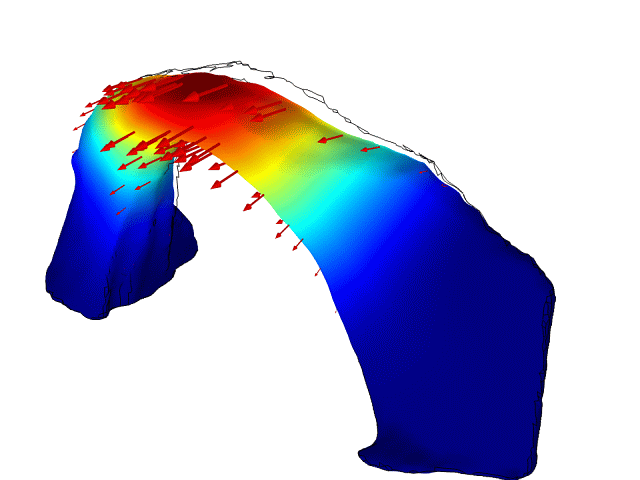
One of the most dramatic natural bridges in the world shakes, shivers and bends in response to waves from a nearby lake and tiny earthquakes hundreds of miles away, new research showed.
The delicately carved Rainbow Bridge, located in southern Utah, twists, sways and stretches in response to induced earthquakes as far away as Oklahoma, according to new research. The rock formation also responds to natural waves rippling the surface of Lake Powell, on the border between Utah and Arizona, the research showed. The findings could provide insights into when this naturally carved wonder could eventually topple, researchers said.
"Rainbow Bridge is constantly on the verge of stability," study lead author Jeffrey Moore, a geophysicist at the University of Utah in Salt Lake City, said in a statement. "It's at this delicate balance, and it's worth trying to understand what forces play a role in accelerating the demise of such sensitive and exceptional natural features." [See Images of Rainbow Bridge's Dramatic Movement]
Natural wonder
Rainbow Bridge is a massive, 300-foot-tall (90 meters) natural sandstone bridge carved by wind and water over millennia. The iconic arch is honored by nearby tribal groups, and visitors are barred from walking under it.
However, Moore and his colleagues recently received permission from the tribes to monitor the motion of Rainbow Bridge. He and his colleagues placed seismic sensors on and around the bridge. Then, they listened.
It turned out Rainbow Bridge had eight dominant vibrational modes, or ways in which it moves.
"A mode is the pattern of vibrational motion at a given frequency," Moore said. "Think of a guitar string. When you pluck a guitar string, you generate one main tone plus several overtones on top of that. Those are all different modes."
Get the world’s most fascinating discoveries delivered straight to your inbox.
The bridge's modes of vibration included side-to-side sways, twists, bends, and up-and-down motions.
While most of the time, the bridge experienced just tiny vibrations, occasionally, outside forces pushed the bridge to vibrate at its resonant frequency. (Objects that are moved at their resonant frequency will experience amplified motion, similar to the famous Tacoma Narrows Bridge that famously whipped back and forth violently and then collapsed after a light wind caused it to oscillate at a resonant frequency.) [10 of the Worst Engineering Disasters in History]
For instance, the bridge experienced a forward-and-backward bending motion that operated at about the same frequency as the waves rippling across the surface of Lake Powell.
The bridge also shivered in response to earthquakes, one of which was a human-made earthquake induced 994 miles (1,600 km) away in Oklahoma.
"Many things we do are actually felt by Rainbow Bridge, which is extremely remote," he said. "Human activity has altered the Earth's vibrational wave field."
Of course, it's not clear that these human-made tremors are bigger than those induced by wind, Moore added.
Changes over time
During seismic monitoring, the National Park Service took detailed photographs and then created a 3D model of the arch. Based on this model, the team concluded that the arch weighs about 110,000 tons.
To see how the bridge is changing over time (and whether it's any closer to its eventual demise), Moore and his colleagues plan to compare these initial results with a second seismic assessment.
"We hope to provide a new way for people to look at the bridge as a dynamic, lively feature that's constantly vibrating and constantly moving," Moore said. "You get a new understanding of the bridge as a living feature rather than a static structure."
Original article on Live Science.

Tia is the editor-in-chief (premium) and was formerly managing editor and senior writer for Live Science. Her work has appeared in Scientific American, Wired.com, Science News and other outlets. She holds a master's degree in bioengineering from the University of Washington, a graduate certificate in science writing from UC Santa Cruz and a bachelor's degree in mechanical engineering from the University of Texas at Austin. Tia was part of a team at the Milwaukee Journal Sentinel that published the Empty Cradles series on preterm births, which won multiple awards, including the 2012 Casey Medal for Meritorious Journalism.


